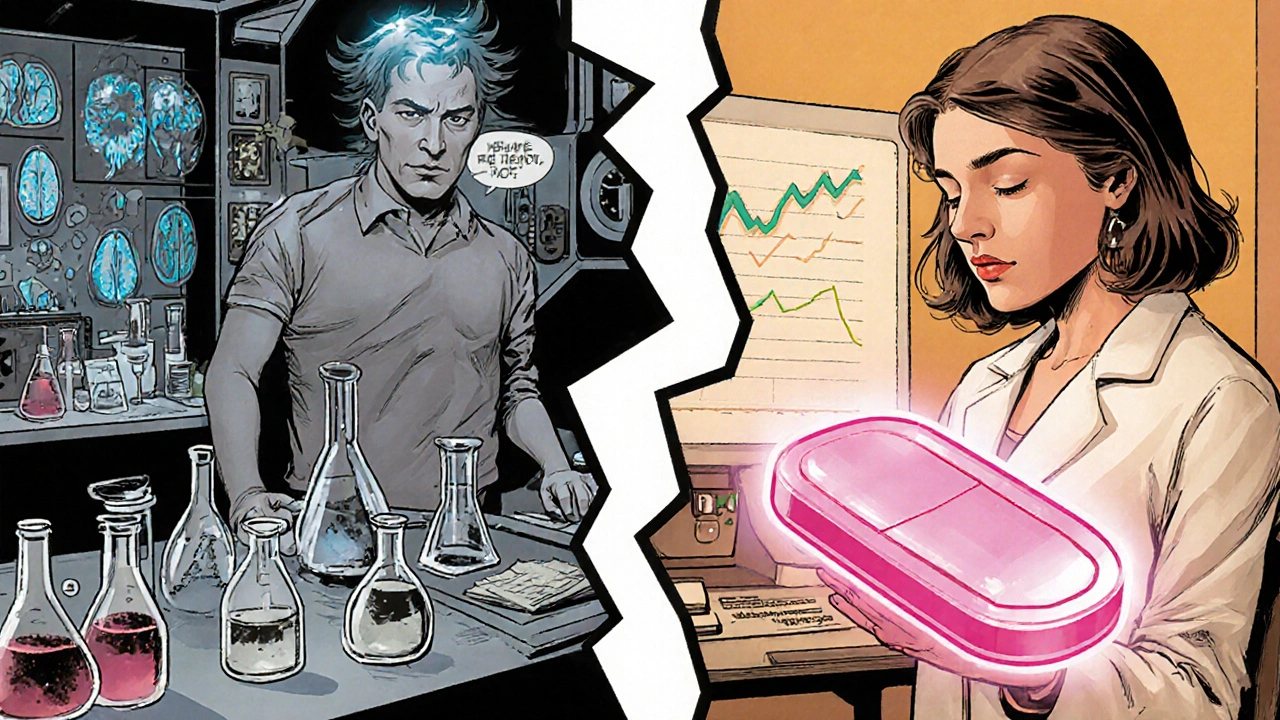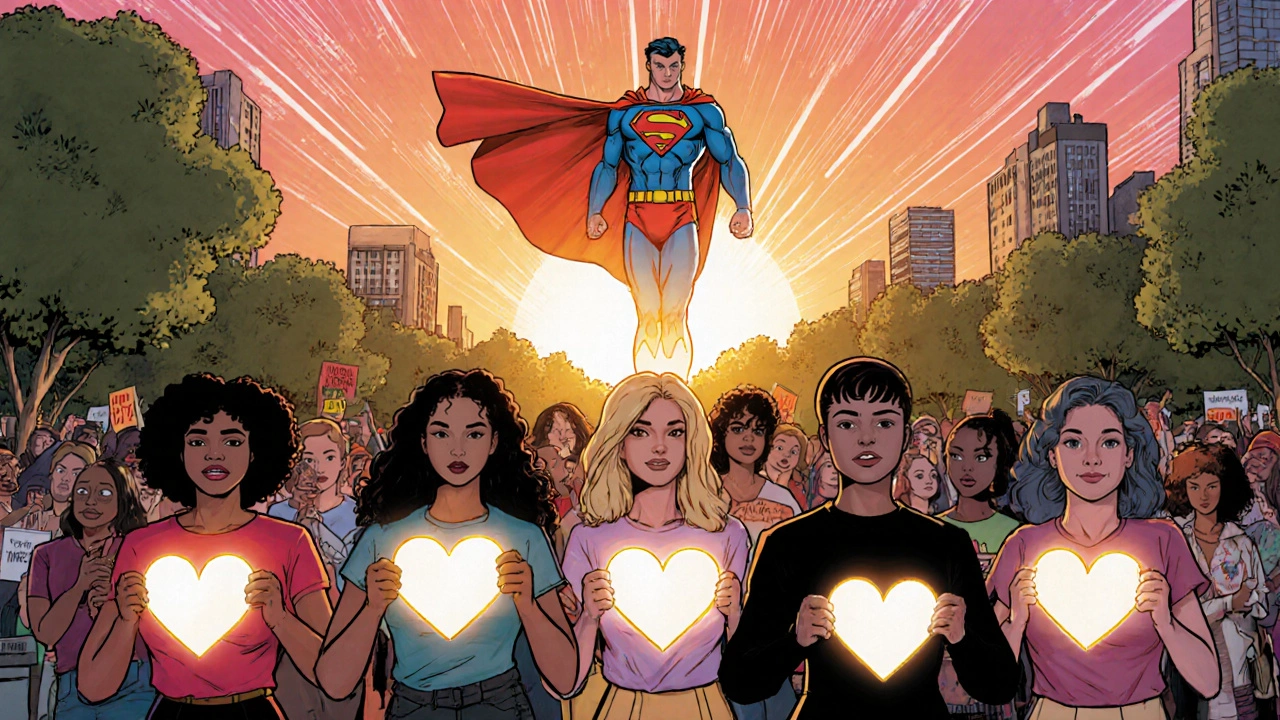Flibanserin vs. Bremelanotide Comparison Tool
Compare Treatment Options
Select your priorities to see which treatment better aligns with your needs. This tool helps you weigh key factors in choosing between flibanserin (Addyi) and bremelanotide (Vyleesi).
Personalized Treatment Recommendation
Select your priorities above to see which treatment aligns best with your needs
Flibanserin has sparked a heated debate over how women’s sexual health is treated by medicine, regulators, and society. This article breaks down what the drug does, why it became a flashpoint for gender equity, and what the future holds for women seeking help with low sexual desire.
Quick Takeaways
- Flibanserin is a daily pill approved for pre‑menopausal women with hypoactive sexual desire disorder (HSDD).
- Its FDA approval in 2015 followed years of contentious hearings about efficacy, safety, and gender bias.
- Side effects include dizziness, low blood pressure, and interactions with alcohol or certain antidepressants.
- Advocacy groups argue that the drug’s struggle reflects broader inequities in how female sexual problems are researched and treated.
- Alternative treatments such as bremelanotide (injection) and counseling offer different risk‑benefit profiles.
What Is Flibanserin?
Flibanserin is a prescription medication originally developed as an antidepressant but later repositioned to treat hypoactive sexual desire disorder (HSDD) in pre‑menopausal women. It works by modulating serotonin, dopamine, and norepinephrine receptors in the brain, aiming to rebalance the neurochemistry that influences sexual desire.
How It Works and the Clinical Evidence
Flibanserin’s mechanism is often described as a “female Viagra,” though the comparison is imperfect. Instead of a fast‑acting vasodilator, it is taken once daily, with effects typically emerging after several weeks. In the pivotal PhaseIII trials (the VIOLET and DAISY studies), the drug produced a modest increase in the number of satisfying sexual encounters - roughly 0.5 to 1.0 more per month compared to placebo.
Key trial data:
- Average increase inmonthly satisfying desire events: 0.5-1.0vsplacebo.
- Responder rates (≥1additional desire event): 57%vs34%placebo.
- Mean change in the Female Sexual Function Index (FSFI) desire domain: +0.6vs+0.2placebo.
While statistically significant, critics argue the clinical relevance is limited. Nonetheless, for women who felt ignored by other options, even a small boost mattered.
Regulatory Battles and FDA Decision
The United States Food and Drug Administration (FDA) initially denied approval in 2010, citing insufficient efficacy and safety concerns, especially when combined with alcohol. After a high‑profile lobbying push by Sprout Pharmaceuticals, the company reapplied with new data and a risk‑evaluation and mitigation strategy (REMS).
In August2015, the FDA granted approval under the REMS program, making flibanserin the first drug specifically targeting female sexual desire. The decision was met with mixed reactions: patient advocacy groups celebrated a new option, while some physicians warned of limited benefit and potential misuse.

Side Effects and Safety Concerns
Flibanserin’s safety profile drove much of the controversy. The most common adverse events were:
- Dizziness (≈30%)
- Somnolence (≈30%)
- Nausea (≈20%)
- Hypotension, especially when alcohol is consumed (≈2% severe cases)
Because the drug interacts with the enzyme CYP3A4, it should not be taken with certain antidepressants (e.g., SSRIs) or antifungal agents. The REMS program requires pharmacists to counsel patients on avoiding alcohol and to verify no contraindicated medications are present.
Gender Bias in Sexual Health Research
One of the strongest arguments for the “fight for female sexual equality” stems from how sexual health research has historically favored men. For decades, erectile dysfunction drugs received rapid approval and massive marketing budgets, while female‑focused therapies faced higher evidentiary thresholds.
Data points illustrating bias:
- Between 1998‑2018, the FDA approved 14men’s sexual dysfunction drugs versus only 1women’s drug (flibanserin).
- Funding for male sexual health studies was, on average, three times higher than for female desire research.
- Surveys of physicians show a 40% lower likelihood of prescribing a novel female sexual health drug compared to a comparable male drug.
These disparities fuel advocacy efforts that push for equitable research funding, balanced trial designs, and culturally sensitive messaging about female desire.
Advocacy and the Push for Equality
Several organizations have taken up the cause:
- The Sexual Health Alliance - promotes education on women’s desire disorders and lobbies for insurance coverage.
- Women’s Health Initiative - publishes research on the psychosocial impact of low desire.
- Patient‑led support groups on platforms like Reddit and Facebook provide first‑hand experiences, normalizing conversations about desire.
These groups argue that the fight isn’t just about one pill; it’s about validating women’s sexual well‑being as a legitimate health concern, requiring the same rigor and respect given to men’s issues.

Alternatives and Current Treatment Landscape
Since flibanserin’s debut, other options have entered the market:
| Attribute | Flibanserin (Addyi) | Bremelanotide (Vyleesi) |
|---|---|---|
| Formulation | Oral tablet, daily | Subcutaneous injection, PRN |
| Approved Age | ≥18years | ≥19years |
| Mechanism | Serotonin‑dopamine modulator | Melanocortin‑4 receptor agonist |
| Typical Efficacy (increase in satisfying events) | 0.5-1.0per month | 1.2per month |
| Key Side Effects | Dizziness, hypotension, alcohol interaction | Injection site pain, nausea, flushing |
| Contra‑indications | Alcohol, CYP3A4 inhibitors | Pregnancy, uncontrolled hypertension |
Beyond pharmaceuticals, counseling (cognitive‑behavioral therapy, sex therapy) and lifestyle changes (stress reduction, relationship communication) remain first‑line interventions. Many clinicians recommend a combined approach before prescribing medication.
Key Takeaways for Patients and Providers
- Flibanserin offers a modest benefit for pre‑menopausal women with HSDD, but it’s not a miracle cure.
- Strict adherence to the REMS guidelines-no alcohol, watch drug interactions-is essential for safety.
- The drug’s approval story highlights longstanding gender bias in sexual health research and drug regulation.
- Advocacy groups continue to push for better funding, broader insurance coverage, and more inclusive clinical trials.
- Consider all treatment options, including therapy and newer agents like bremelanotide, to find the best personalized plan.
Frequently Asked Questions
How long does it take for flibanserin to work?
Most studies show noticeable changes after 4‑8weeks of daily dosing, though individual responses vary.
Can men take flibanserin?
The drug is approved only for pre‑menopausal women with HSDD. Its safety and efficacy have not been established in men.
Is flibanserin covered by insurance?
Coverage varies. Some private insurers reimburse the medication when a clinician documents HSDD; many government plans still list it as investigational.
What are the biggest safety warnings?
Avoid alcohol while taking flibanserin, as the combination can cause severe hypotension or syncope. Also, do not use with strong CYP3A4 inhibitors (e.g., ketoconazole) or certain antidepressants without medical supervision.
How does flibanserin differ from bremelanotide?
Flibanserin is taken daily as a pill and works through serotonin pathways, while bremelanotide is a on‑demand injection that stimulates melanocortin receptors. The latter tends to produce a larger short‑term boost but requires an injection before sexual activity.


Terri DeLuca-MacMahon
October 15, 2025 AT 20:14Ladies, let’s celebrate the progress! 🎉 Flibanserin may not be perfect, but it opened the door for conversations about women’s desire. Keep pushing for research and support each other! 💪
gary kennemer
October 16, 2025 AT 18:27Indeed, the modest efficacy reported in the VIOLET and DAISY trials underscores a broader point: sexual health is a complex neuro‑behavioral system. While the effect size seems small, for some patients the incremental gain translates into meaningful relational satisfaction.
Payton Haynes
October 17, 2025 AT 16:40It’s clear the pharma lobby forced the FDA to approve a drug that barely works just to line their pockets.
Earlene Kalman
October 18, 2025 AT 14:54Exactly, the data shows only a half‑to‑one extra satisfying event per month, which is hardly a breakthrough.
Brian Skehan
October 19, 2025 AT 13:07The REMS program feels like a way to hide safety issues while still selling a product; it’s a classic ‘risk‑management’ façade that keeps the public in the dark.
Andrew J. Zak
October 20, 2025 AT 11:20The intention behind REMS was to mitigate serious interactions, especially with alcohol, but perhaps more transparent post‑marketing surveillance could address those concerns.
Dominique Watson
October 21, 2025 AT 09:34From a British perspective, the United States’ singular focus on a female ‘Viagra’ highlights a cultural preoccupation with pharmacological solutions over holistic approaches.
Mia Michaelsen
October 22, 2025 AT 07:47While the US market emphasizes medication, European guidelines often prioritize psychotherapy first, reflecting a more balanced view of HSDD management.
Kat Mudd
October 23, 2025 AT 06:00Flibanserin’s journey from a failed antidepressant to a controversial sexual desire drug is a textbook case of how market forces can reshape scientific priorities.
The initial negative decision by the FDA in 2010 was based on rigorous efficacy thresholds that the later data barely met.
When Sprout Pharmaceuticals lobbied aggressively, the agency capitulated, granting approval under a restrictive REMS program that many clinicians still view skeptically.
The side‑effect profile, dominated by dizziness and somnolence, means that patients often experience a trade‑off between modest desire gains and daily fatigue.
Moreover, the alcohol interaction warning effectively bans social drinking, a cultural norm that can isolate patients further.
In real‑world practice, adherence rates drop sharply once patients realize they must avoid alcohol and monitor for hypotension.
Critics argue that the modest increase of half a satisfying encounter per month is statistically significant but clinically negligible.
Yet, for some women who have felt dismissed by the medical establishment, even that slight uplift can restore a sense of agency.
The gender bias data-fourteen male erectile‑dysfunction drugs versus one female-specific pill over two decades-underscores systemic inequities in research funding.
This disparity is reinforced by pharmaceutical companies allocating larger budgets to male drugs, fueling aggressive marketing campaigns that dwarf the modest outreach for female therapies.
Advocacy groups have rightly called for equitable trial designs, yet progress remains glacial.
Alternative options like bremelanotide offer a different risk‑benefit calculation, delivering a stronger short‑term effect at the cost of injections.
Counseling and sex therapy, although less headline‑grabbing, still represent the cornerstone of evidence‑based treatment for low desire.
Insurance coverage for flibanserin varies, leaving many patients to shoulder out‑of‑pocket costs, which further widens the accessibility gap.
Ultimately, the conversation around flibanserin should move beyond the pill itself and address the broader cultural reluctance to discuss female sexuality openly.
By fostering open dialogue, investing in diversified research, and ensuring transparent safety data, the medical community can honor the principle of true sexual equality.
Pradeep kumar
October 24, 2025 AT 04:14Your comprehensive overview spotlights the crucial need for multidimensional interventions; integrating psychopharmacology with cognitive‑behavioral frameworks can synergistically enhance desire pathways while mitigating adverse effects.
Future trials that stratify participants by neurochemical biomarkers may yield precision‑medicine strategies, reducing the one‑size‑fits‑all approach.
James Waltrip
October 25, 2025 AT 02:27Only the elite circles of academia truly grasp that the FDA’s concession was less about science and more about a covert agenda to monetize a gender‑specific niche, a move that reeks of opportunistic capitalism.
Meanwhile, the media’s glossy narratives obscure the stark reality that most patients will never experience a perceptible benefit.
Chinwendu Managwu
October 26, 2025 AT 00:40Haha, maybe the elite like you love drama, but many women actually appreciate having *any* option on the shelf – even if it’s just a tiny nudge 😊.
Kevin Napier
October 26, 2025 AT 21:54Bottom line: keep the conversation going, share experiences, and let clinicians know what works for you – that’s how progress really happens.